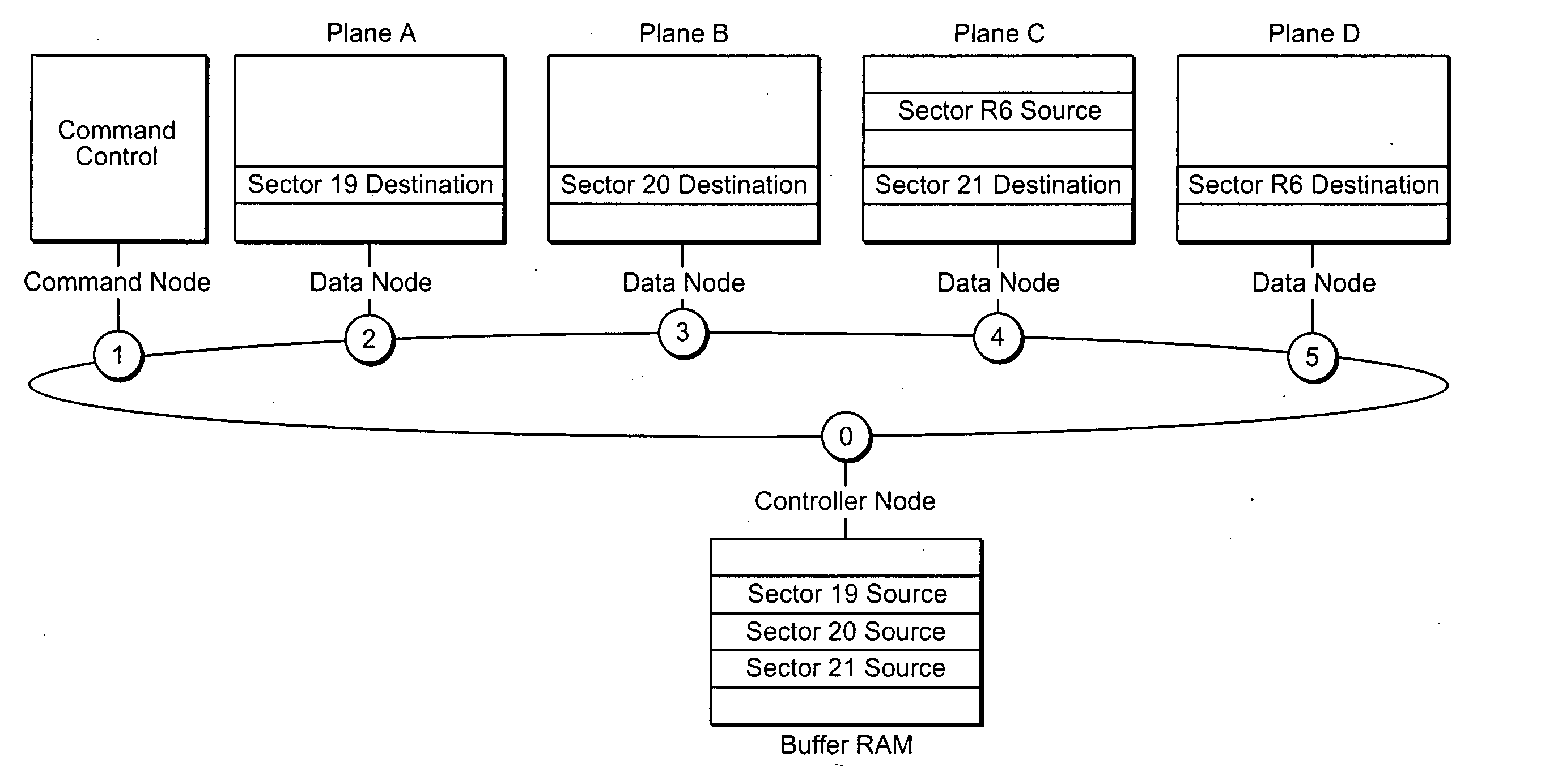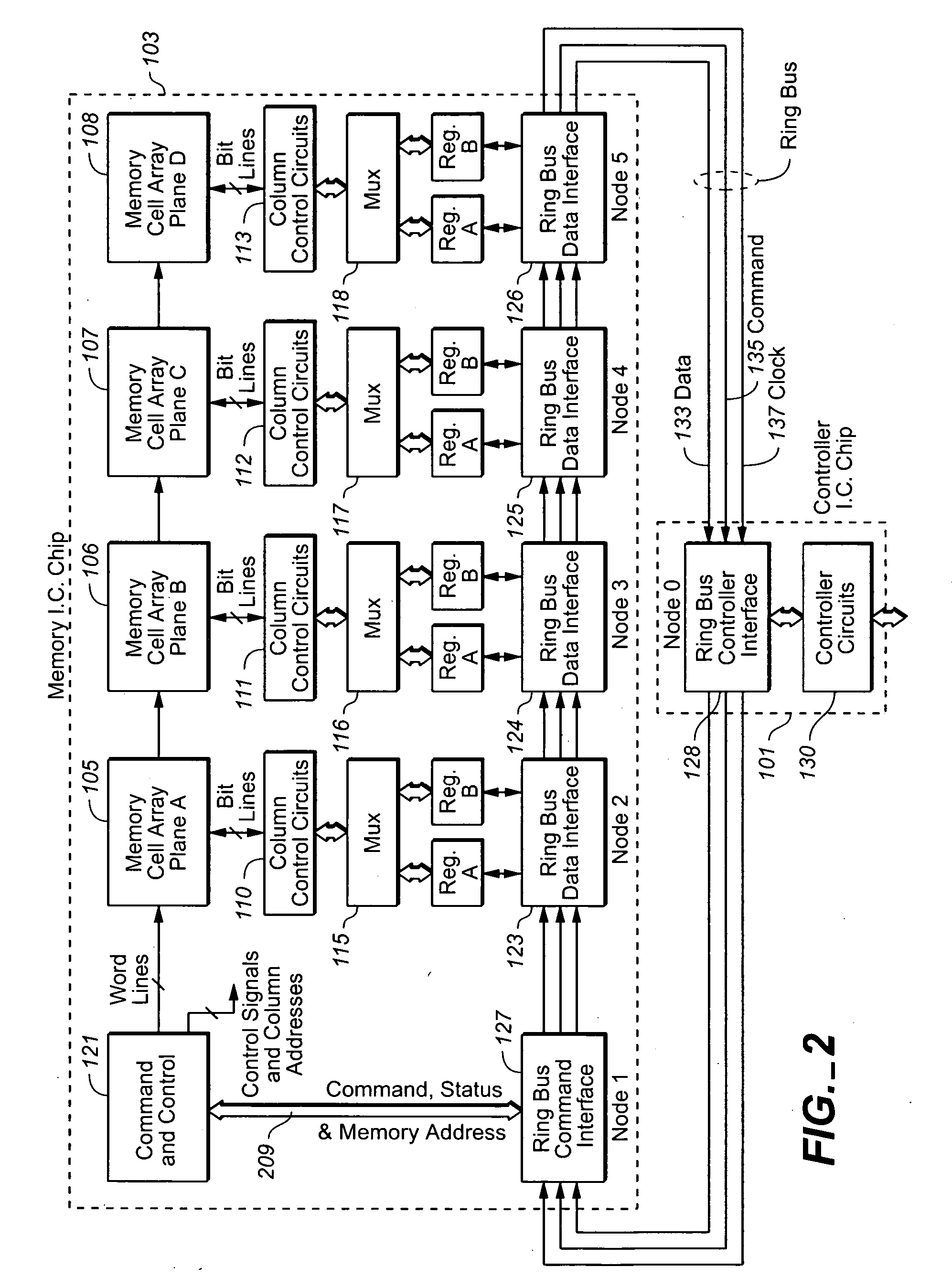Ring bus structure and its use in flash memory systems
a ring bus and flash memory technology, applied in the field of bus structures, can solve the problems of limiting system operating frequency, adversely affecting system performance, and restricted operating speed of flash memory systems, and achieve the effect of flexible and parallel node-to-node commands, data transfers, and easy checking
- Summary
- Abstract
- Description
- Claims
- Application Information
AI Technical Summary
Benefits of technology
Problems solved by technology
Method used
Image
Examples
Embodiment Construction
[0044] A first embodiment of a memory system using a ring bus instead of the conventional bus 15 described above is illustrated in FIGS. 2-9. Referring initially to FIG. 2, a controller integrated circuit chip 101 and a single memory chip 103 form the memory system but additional memory chips can also be included. The memory chip 103 is illustrated to have four planes 105-108 of memory cells but fewer, even one, or more than four memory planes may be used instead. Column control circuits 110-113 are connected to the respective planes 105-108. Data are programmed into and read from the memory planes 105-108 through respective multiplexing circuits 115-118 that selects one of two data registers A or B. During data programming, data stored in one of the registers A or B of a particular plane that is selected by its multiplexer is programmed into that plane. Similarly, during data reading, data read from a plane is written into one of the registers A or B selected by its multiplexer. Us...
PUM
 Login to View More
Login to View More Abstract
Description
Claims
Application Information
 Login to View More
Login to View More - R&D
- Intellectual Property
- Life Sciences
- Materials
- Tech Scout
- Unparalleled Data Quality
- Higher Quality Content
- 60% Fewer Hallucinations
Browse by: Latest US Patents, China's latest patents, Technical Efficacy Thesaurus, Application Domain, Technology Topic, Popular Technical Reports.
© 2025 PatSnap. All rights reserved.Legal|Privacy policy|Modern Slavery Act Transparency Statement|Sitemap|About US| Contact US: help@patsnap.com



